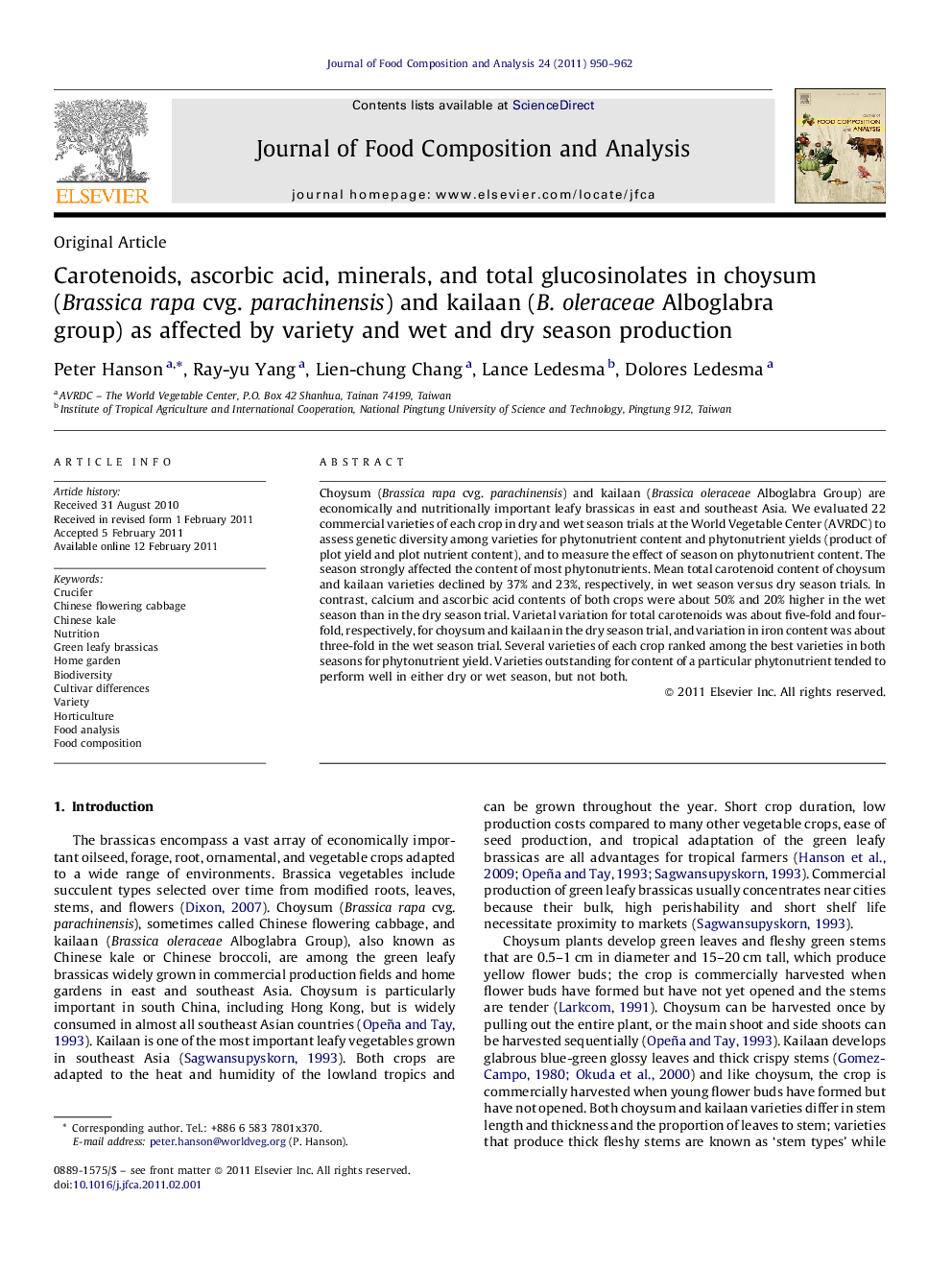| Article ID | Journal | Published Year | Pages | File Type |
|---|---|---|---|---|
| 10552801 | Journal of Food Composition and Analysis | 2011 | 13 Pages |
Abstract
Choysum (Brassica rapa cvg. parachinensis) and kailaan (Brassica oleraceae Alboglabra Group) are economically and nutritionally important leafy brassicas in east and southeast Asia. We evaluated 22 commercial varieties of each crop in dry and wet season trials at the World Vegetable Center (AVRDC) to assess genetic diversity among varieties for phytonutrient content and phytonutrient yields (product of plot yield and plot nutrient content), and to measure the effect of season on phytonutrient content. The season strongly affected the content of most phytonutrients. Mean total carotenoid content of choysum and kailaan varieties declined by 37% and 23%, respectively, in wet season versus dry season trials. In contrast, calcium and ascorbic acid contents of both crops were about 50% and 20% higher in the wet season than in the dry season trial. Varietal variation for total carotenoids was about five-fold and four-fold, respectively, for choysum and kailaan in the dry season trial, and variation in iron content was about three-fold in the wet season trial. Several varieties of each crop ranked among the best varieties in both seasons for phytonutrient yield. Varieties outstanding for content of a particular phytonutrient tended to perform well in either dry or wet season, but not both.
Keywords
Related Topics
Physical Sciences and Engineering
Chemistry
Analytical Chemistry
Authors
Peter Hanson, Ray-yu Yang, Lien-chung Chang, Lance Ledesma, Dolores Ledesma,
